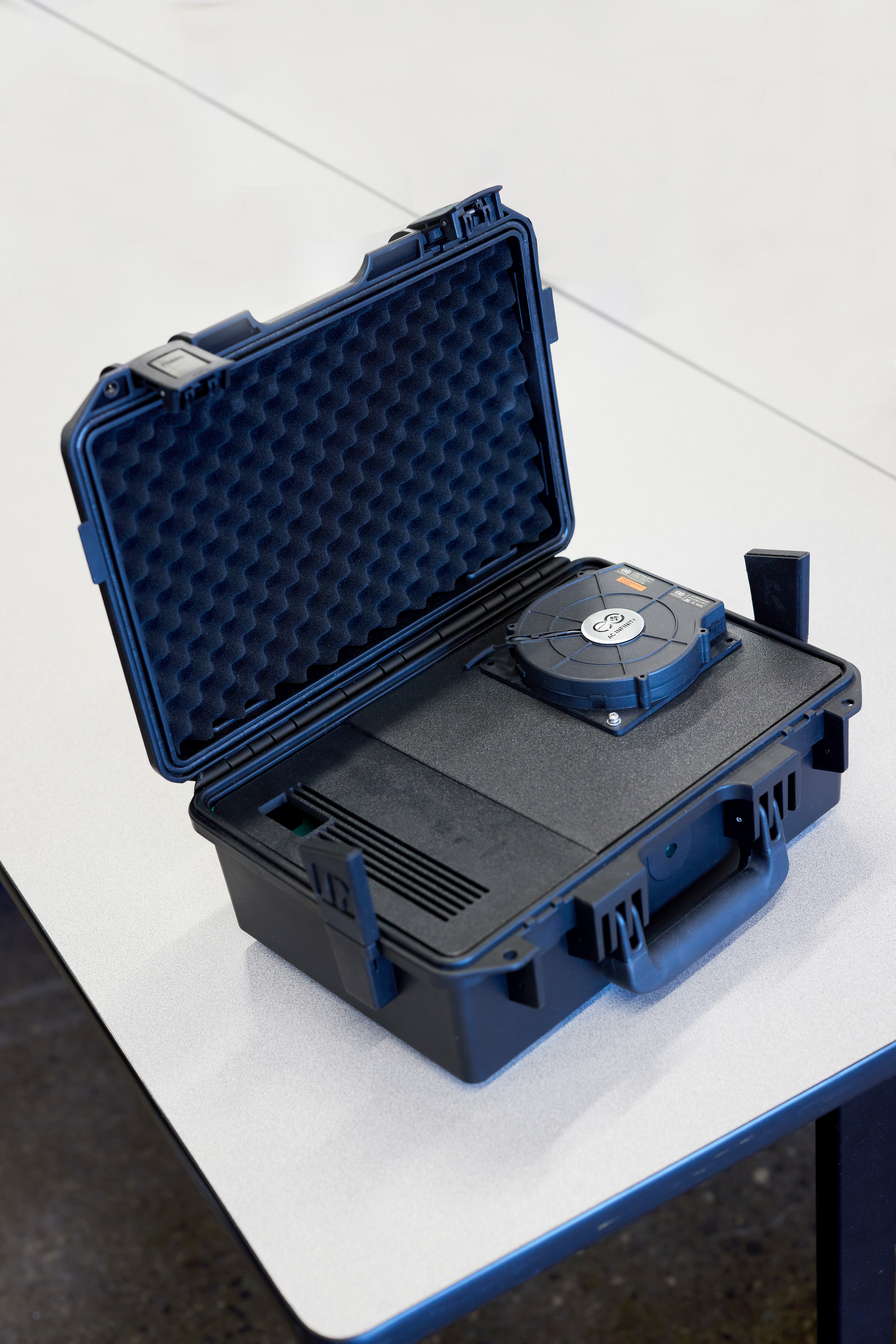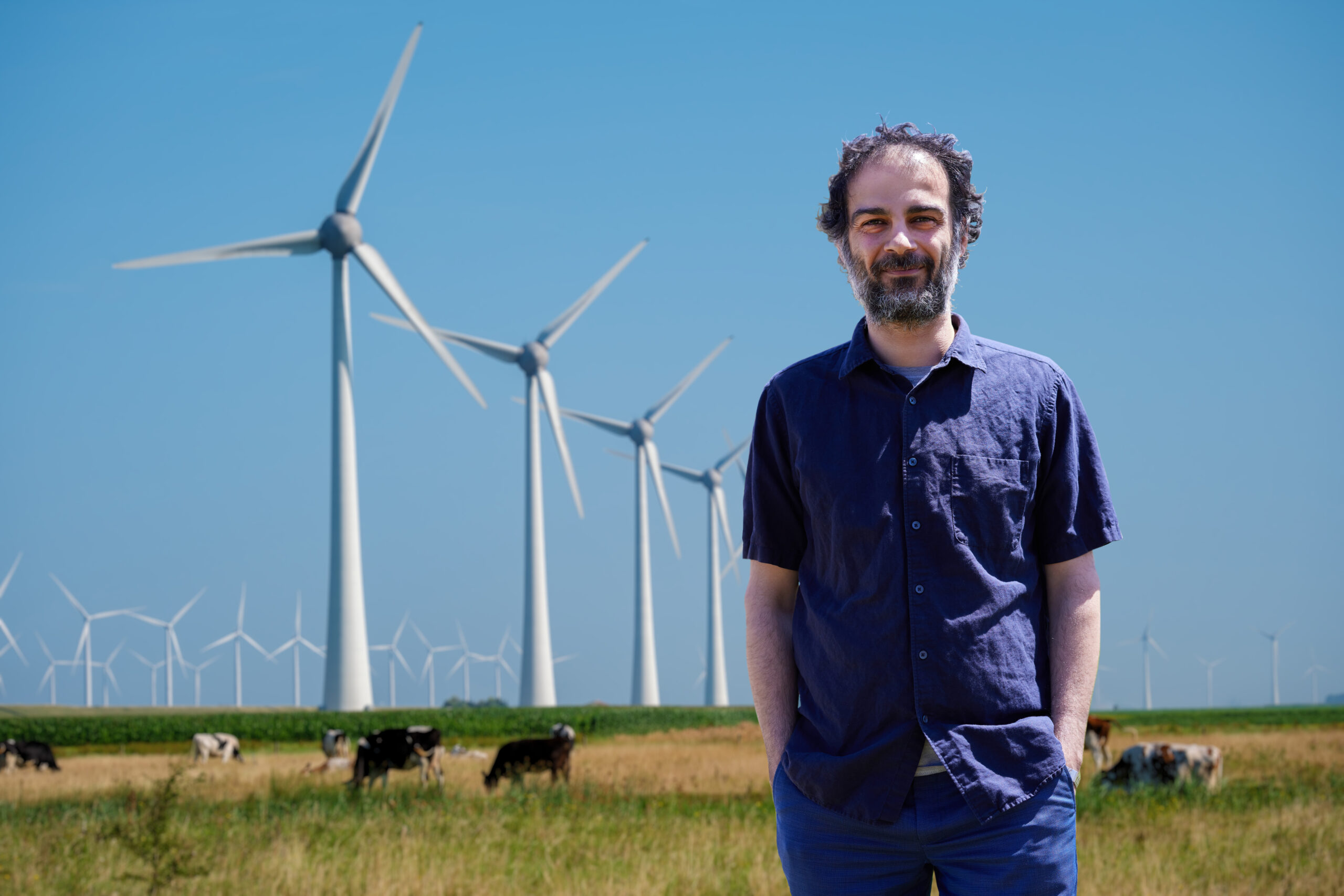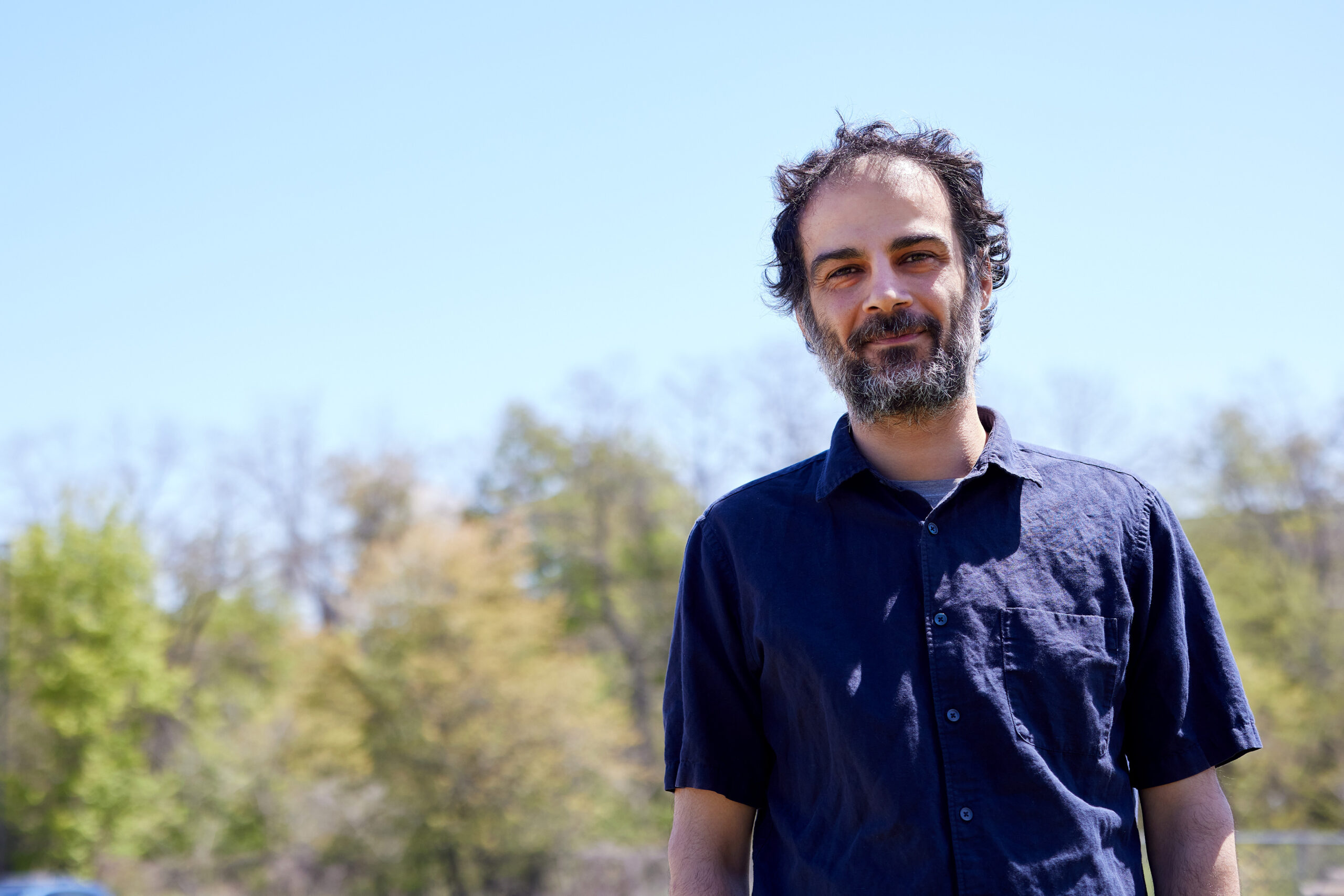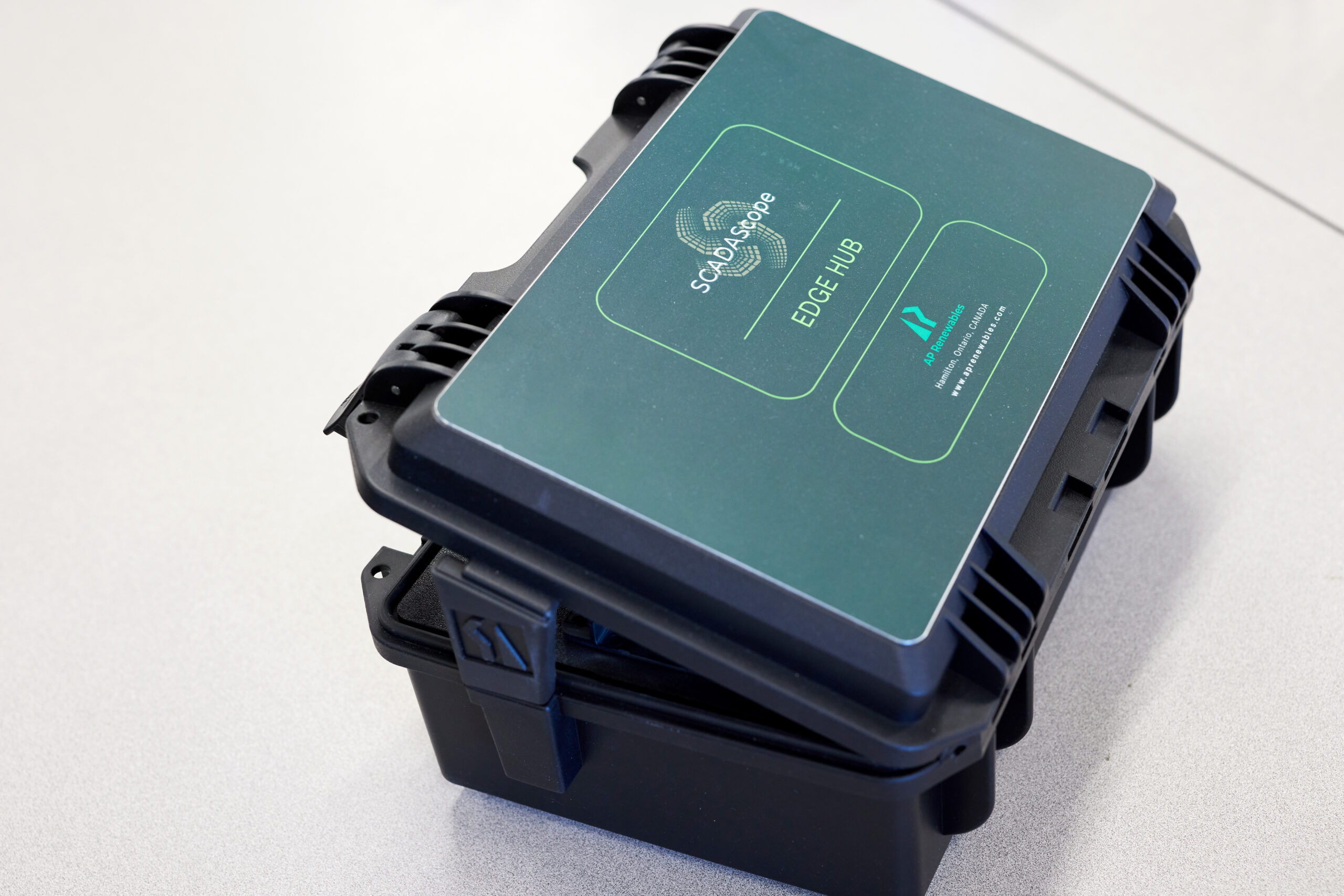Powering the Future

Written by Ian VanDuzer
AP Renewables’ new tool helps out the little guy
Amin Ahmadi wants you to imagine that you own a fleet of cars. It’s the metaphor that he feels best describes the challenges facing wind farm operators today. And if that seems like a bit of a stretch, hear him out.
“Cars are complex mechanical machines, just like turbines,” he explains. What do you do when your car starts making funny noises? “You take it to a mechanic,” Ahmadi says, “who may or may not be able to find what the problem is. So, they’ll change a part, and hope it fixes the problem. If it doesn’t, you’ll have to come back in a couple of weeks to try something else.”
That’s the problem that AP Renewables — founded in 2017 — was initially meant to solve: a specialized consultancy borne out of Ahmadi’s decade of experience climbing up and fixing wind turbines after earning his M.A.Sc in Robotics from McMaster University. AP Renewables earned a name for diagnosing and suggesting fixes for complex, difficult, or hidden problems that plagued wind turbine operators around the world.


But the longer AP Renewables existed, the more Ahmadi found his clients fit a very specific profile: small wind farm operators.
“You may have a farm that has hundreds of turbines,” he says, “or you may have one, two, or five.”
Smaller farms, Ahmadi says, are forced to be reactive; there is less that they can do to maintain the health of their turbines, even though they have way fewer of them to maintain. That has major effects on the farm’s overall efficiency. Larger farms aim for 95%+ availability, while a well-run smaller farm can expect to aim for 80% of the same metric. That’s one of the ways that large farms outperform smaller ones — they not only produce more electricity, but they produce at a greater efficiency, too.
“The teams on the larger farms have a lot of turbines to maintain, so they get a lot of experience with troubleshooting and solving these problems,” Ahmadi explains. “But the smaller farm mechanics aren’t as well-versed in maintaining healthy turbines. And while they are figuring out what is wrong, your expensive machinery is sitting down for a couple of days.”
Proactive, not reactive
But back to the fleet of cars metaphor. Ahmadi thinks it’s an apt comparison for another reason: if you own a fleet of cars, you don’t want to only fix the ones that break; you also want to monitor the fleet so you know which cars are going to cause you future problems.
Wind farm operators can do this with a Power Plant Controller (PPC). This software monitors each turbine on a farm, signalling issues before they shut the turbine down, and allowing a wind farmer to proactively maintain the health of their turbines. Ahmadi says there’s a standard PPC on the market, but it’s not really feasible for the smaller farms: “The software is no different whether it’s running 5 or 150 turbines,” he explains. “So, it’s priced as if it will run 150 turbines.”
This, understandably, prevents the majority of the smaller wind farms from running it.
“We had a smaller operator come to us, saying that he needed the PPC but couldn’t afford it. He wanted to know if we could build something for him at a friendlier price point.” Ahmadi grins. “Turns out, we could.”

Helping out the little guy
AP Renewables launched their SCADAScope PPC this past spring, promising real-time data collection and analysis across the entire farm. The software allows operators to monitor and manage their systems remotely, ensuring that their plant runs smoothly and efficiently at all times.
And, its features — and cost — are tailored towards smaller operators. In doing so, AP Renewables feels that they’ve found their niche in the wind power ecosystem. “Our goal is to manage 2000 turbines in the first 12 months,” Ahmadi says, before mentioning that the market is especially hungry for this type of product. Ahmadi estimates the total market for SCADAScope PPC is about 10,000 turbines worldwide. SCADAScope PPC would keep AP Renewables busy for the next decade or so, at least.
“You want to extend the life of an asset that’s already been installed,” he points out. “We aren’t banking on adding new turbines – we’re working to extend the life of the ones already there.”
At the same time, Ahmadi is already looking beyond turbines for the SCADAScope PPC. “It could work on solar farms, too, for sure,” Ahmadi agrees. He also suggests the value of SCADAScope PPC for data centres, a currently-booming sector thanks to billions of dollars of investment into AI. “These centres will often include some sort of power generation, just to help offset the massive energy costs of running their systems,” Ahmadi explains. “SCADAScope PPC would predict failures in their power generation.”
Hamilton is home
The other advantage to building a software tool is that it can be done from almost anywhere; AP Renewables doesn’t have to go to where the farms are for clients to benefit from their system. That’s great news for Ahmadi, who came to Hamilton as an undergrad at McMaster and has found reason after reason to return.
“It was personal,” Ahmadi says of his choice to come back to the city after a decade of moving across the United States fixing turbines. “There aren’t too many cities where you could go hiking, but also sailing, close to home. “
That’s not to say the decision was entirely personal. “Hamilton’s economic capability has really grown, too,” says Ahmadi. “And the location is fantastic. From a business point of view there are simple logistical things, like our proximity to multiple airports and the ever growing US market via Buffalo or Detroit for example, that make Hamilton a great place for our business.”
“That, along with the innovation and infrastructure here, makes Hamilton a great place to be.”

See what's possible. Bring your discovery to market.
Related Articles
Related
How a HHS Doctor’s Innovation Is Revolutionizing Emergency Childbirth Training
"'It’s vital to practice for serious emergencies,' says Dr. Esther Chin, a Hamilton Health Sciences (HHS) gynecological surgeon and global health lead in McMaster University’s department of obstetrics and gynecology. 'You can’t be a fair-weather surgeon, just like you...
McMaster Researchers Discover Promising New Antibiotic for Crohn’s disease with Help from AI
'"Researchers at McMaster University and the Massachusetts Institute of Technology (MIT) have made two scientific breakthroughs at once: They not only discovered a brand-new antibiotic that targets inflammatory bowel diseases (IBD), but also used a new type of AI to...
Hamilton Health Sciences is piloting new medical technology across the city
"A portable, advanced handheld skin imaging device being tested by Hamilton Health Sciences (HHS) is proving to be highly effective in spotting very early signs of pressure injuries in patients, even when damage is starting to form under the skin and can’t yet be seen...
